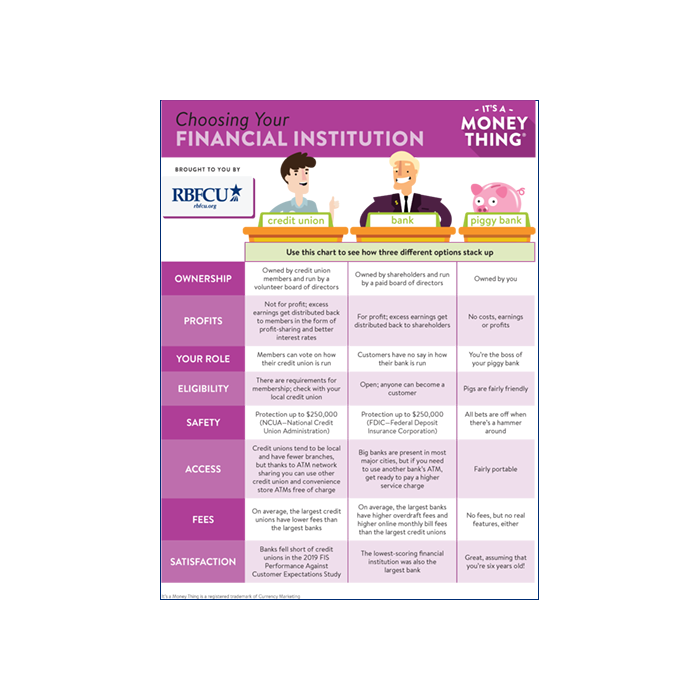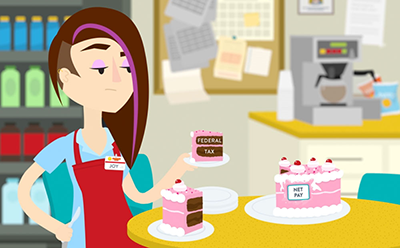Let’s Talk Taxes: Understanding and Directing Your Withholdings
You just got your paycheck. Your eyes scan down the list of deductions and settle on the most important part — your take-home pay.
You take that number and start subtracting your bills, your day-to-day purchases, or that expensive item you’ve got your eye on. However, hiding in the often-overlooked payroll withholdings, you may find some untapped potential.
Paycheck withholdings are a fact of life for most workers, but they aren’t set in stone. While it might seem like the right idea is to accept your withholdings as given and hope for a big refund at tax time, you’re better off taking a more proactive approach.
With a closer look at your life situation and a touch of math, you can wind up with more pocket money and better financial well-being.
Learn the terms
You may have noticed that your pay stub is riddled with abbreviations. The first hurdle to get over when it comes to understanding your withholdings is to be clear on the terms.
First, you have federal taxes (FT for Federal Tax or FWT for Federal Tax Withheld) and state taxes (ST for State Tax or SWT for State Tax Withheld).
(Article continues below video)
You will also see some other abbreviated terms such as FICA SS. This abbreviation represents a paycheck withholding from the Federal Insurance Contributions Act or FICA, and the SS indicates that this portion of your check goes to Social Security benefits, which you can collect when you reach your mid-60s.
You may also find FICA MED, indicating contributions to Medicare. Medicare subsidizes healthcare costs for people over 65, as well as those who collect Social Security Disability Insurance (SSDI) benefits.
Sometimes these two FICA taxes will be grouped together on your pay stub, in which case it will just show up as FICA tax.
A handful of states also withhold State Disability Insurance (SDI), which covers people who can’t work due to temporary disability.
With a closer look at your life situation and a touch of math, you can wind up with more pocket money and better financial well-being.
Depending on your profession and your location, you may find other abbreviations to indicate further paycheck withholdings. You can always look them up yourself, but the surest bet is often to contact your company’s HR department and find out from the source.
Finally, you may also have noticed YTD amounts. The YTD stands for Year To Date, and shows the running total for each category within the current tax year. YTD amounts are useful for estimating your yearly income figures, and for comparing those figures to other years. If the YTD figures are not provided on your pay stub, you can always figure them out by adding together all of your paychecks for the year.
Manage the math
If you want to get your withholdings right, you’ve got to crunch the numbers.
Luckily, there are numerous online withholding calculators that you can use to make the process quick and easy. Everyone — from the IRS to banks to tax service providers — has their own version, but the basic concept is the same.
Using the figures from recent tax returns and pay stubs, you can calculate your estimated yearly income as well as the resulting withholdings, and then optimize your earnings.
Know your withholding allowances
The key to maximizing your take-home pay is to take full advantage of withholding allowances. Tax allowances are factored in when your employer calculates how much federal income tax to withhold from your pay. The more allowances you claim, the less money is withheld from each paycheck. Using a W-4 form, you can claim a variety of allowances depending on your marital status, number of dependents, property taxes, federal student loans, child care and more.
Typically, your employer will give you a W-4 form to fill out at the beginning of your employment, and sometimes each year thereafter. You should make sure any pertinent changes are reflected on an ongoing basis.
You can always fill out a new W-4 form yourself when your personal financial situation changes in a way that impacts your tax allowances. Make sure to adjust your W-4 when you get married or divorced, have or adopt a child, get a second job, your spouse gets a job or changes jobs, or if you’ll be unemployed for part of the year.
Although it always seems best to get as much monthly take-home pay as possible, you generally want to use caution, and stay away from claiming too many allowances. If your employer ends up not withholding enough from each paycheck, you may end up with the nasty surprise of a large balance owing when you complete your yearly income tax return.
Worse still, you could possibly be subject to penalties that will sting financially.
Free your refund
For many people, tax refunds are a bit of a guessing game. You prepare your taxes, send them off and wait, hoping for as many dollars as possible to come back your way.
Although having a special yearly bonus can be enticing, it pays to remember that every dollar was yours in the first place. You work hard to earn what you make, so why wait a whole year to reap the rewards?
When you get a tax refund, that just means that the government has withheld too much of your pay, and is giving it back. You’ve essentially provided the government with an interest-free loan. You can make better use of that money month to month, when it’s properly invested, saved up for a rainy day or spent on purchases that help with your everyday needs.
Plus, that way you can rest assured that you’re making the most of your income. Just imagine if your refund could be earning interest for you all year long, or just making your life better every day instead of showing up once in your bank account and likely disappearing quickly.


